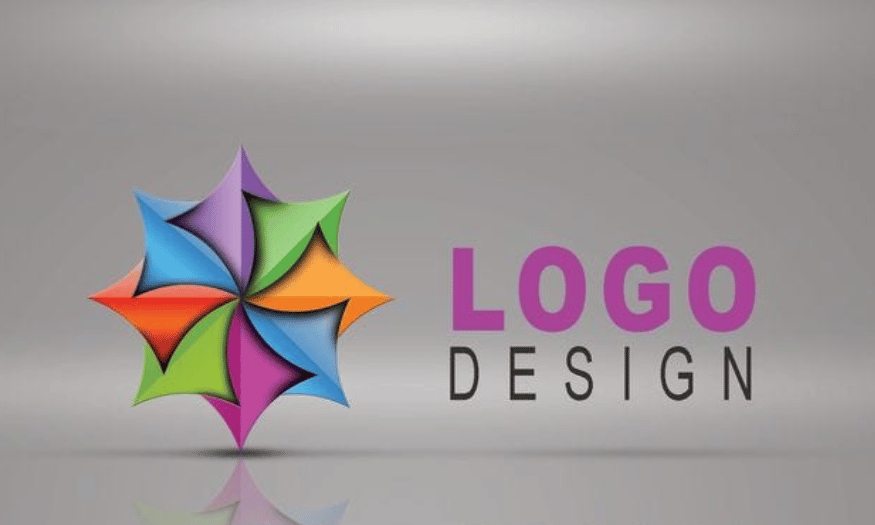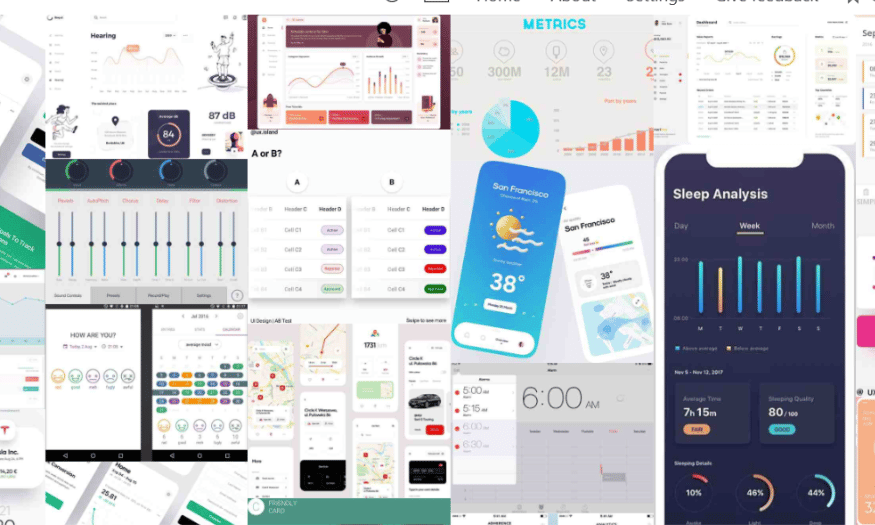Best Selling Products
Symbolism in Graphic Design
Nội dung
- 1. What is symbolism?
- 2. Natural symbols
- 2.1 Medieval animal symbols and heraldry
- 2.2 Flower symbols
- 2.3 Four elements and zodiac symbols
- 2.4 Goddess Symbol
- 3. Celestial symbols
- 3.1 Sun symbol
- 3.2 Moon symbol
- 3.3 Constellation and planetary symbols
- 4. Geometric symbols
- 4.1 Geometry in religion and beliefs
- 4.2 Applications of geometry in design
- 5. Conclusion
Symbolism in graphic design is a powerful artistic concept where images, colors, and shapes are not merely aesthetic elements but also carry deep meanings and emotional expressions. Originating from the art movements of the early 20th century, symbolism has evolved and become an indispensable part of modern graphic design.

Symbolism in graphic design is a powerful artistic concept where images, colors, and shapes are not only aesthetic elements but also carry deep meanings and emotional expressions. Originating from the art movements of the early 20th century, symbolism has developed and become an indispensable part of modern graphic design. Through the use of symbols, designers can convey complex messages and evoke emotions, creating a strong connection between products and consumers. In this article, Sadesign will explore with you the outstanding features of symbolism, its role in graphic design, and how it can be applied to create impressive and profound works.
1. What is symbolism?
Symbolism in art is a movement that expresses ideas and emotions through symbols and signs, rather than relying solely on plain language. In modern graphic design, the influence of symbolism is evident in the way designers use images to convey messages to consumers. Symbols can suggest deep meanings, creating a connection with the audience without having to explain them in words.
Symbolism uses naturally occurring signs and images, such as shapes and colors, to effectively communicate messages. For example, a red octagonal stop sign is more than just an image; it conveys a clear and urgent message to stop, helping to protect the safety of road users without the need for lengthy text. In this article, we will explore three of the most common types of symbols, along with specific examples and their applications in modern design.
.png)
2. Natural symbols
Natural symbols have been around since prehistoric times, reflecting the deep connection between humans and the world around them. Images such as wild animals, birds, and flowers were often depicted on cave walls, reflecting our ancestors’ respect and understanding of nature. Today, these symbols not only exist in classical art but are also stylized and applied to modern graphic design, creating a strong connection with the viewer. The use of natural symbols in design is not only aesthetic but also contains a profound message of harmony with the environment.
In the context of modern design, natural symbols are divided into many categories, including animal and floral symbols. Designers exploit the unique characteristics of each symbol to effectively convey messages. For example, the image of an owl not only symbolizes intelligence but also evokes mystery and depth. Meanwhile, flowers such as roses or laurel wreaths symbolize love and success, creating a rich visual language in design.
2.1 Medieval animal symbols and heraldry
Animal symbols have long been used in human culture, representing specific qualities and associated with myths and legends. Animals such as lions, doves or dogs are not only images but also symbols of power, peace and loyalty. In the Middle Ages, heraldry and banners used animal images to represent the identity and power of clans, creating a rich and diverse system of symbols.
Today, animal symbols are still heavily used in branding. Designers often use animal imagery to create a sense of familiarity and tradition for their products. Brands like “Red Bull” or “White Lion” are more than just names; they carry deep meanings and emotions that help connect with consumers. Reusing these symbols not only creates familiarity but also honors the cultural value of each product.
.png)
2.2 Flower symbols
Floral symbols are an important part of the visual language of design, bringing a deep connection to nature and life. Flowers are not just beautiful images but are also associated with many meanings, from love, life to victory. Each flower carries its own message, such as the olive branch symbolizing peace or the rose symbolizing deep love.
In modern design, floral patterns are often used to decorate and accentuate products. Designers need to carefully research the meaning of each symbol in each culture to ensure that the message conveyed is positive and appropriate. For example, the lotus flower is not only a symbol of purity in Indian and Buddhist cultures, but has also become a popular image in health and beauty brands. This combination not only creates aesthetic value but also deeply connects with consumers.
2.3 Four elements and zodiac symbols
The four elements: earth, water, fire and air, are not only basic elements in nature but also carry deep symbolic meaning in design. Each element represents unique qualities: earth represents stability, water brings calmness, air represents life and fire symbolizes strength. When designers incorporate these elements in their work, they not only create balance and harmony but also convey a message about the connection between humans and nature.
Each element is also associated with a zodiac sign, creating an interesting connection between nature and spirituality. Designers often use zodiac symbols combined with the colors of the element to express the theme and emotion of the work. This not only enhances the appeal but also gives depth to the design, making it easier for viewers to feel the message the work is trying to convey.
2.4 Goddess Symbol
In many cultures, goddesses are often seen as the embodiment of nature and the universe. Images of goddesses such as Artemis or Gaia not only represent strength and wisdom, but also show respect for the forces of nature. Modern designers have skillfully used these symbols to create works that are not only beautiful but also carry deep meaning about the connection between humans and nature.
Using goddess symbols in design is not just for decoration; it is also a way to emphasize the values and messages that the brand wants to convey. These images often have a sacred and ancient feel, helping to create a strong connection with consumers. By incorporating these symbols into their designs, brands not only highlight their uniqueness but also express their cultural identity in the modern market.
.png)
3. Celestial symbols
The night sky has always been an endless source of inspiration for humans, with its mysteries and indescribable beauty. While we often only see the twinkling stars, the celestial world also contains many profound symbols and meanings. Celestial symbols not only reflect the magic of the universe but also express cultural and spiritual values. Let's explore these symbols and how they are applied in modern design.
Celestial symbols bring people a sense of closeness to the mystical. Images such as the sun, moon, and constellations are not simply elements of nature; they also represent philosophical concepts and beliefs of mankind. Over time, these symbols have been stylized to suit the cultural context, creating unique and meaningful works of art.
3.1 Sun symbol
The sun, with its powerful light and prominent presence, is the most recognizable celestial symbol. In many cultures, the sun is not simply a source of light but is also considered the center of the universe, symbolizing strength, power and life. The symbol of the sun was honored by ancient civilizations such as the Egyptians and Greeks, reflecting its importance in daily life and beliefs.
The Sun of Vergina, one of the most famous sun symbols, is a golden circle with rays radiating from it. Over time, the image has been stylized to become a symbol of royalty and power. In modern design, the sun often brings a sense of joy, excitement, and new beginnings. Designers use the image of the sun to create products that are not only beautiful but also bring a positive feeling to the viewer.
.png)
3.2 Moon symbol
In contrast to the sun, the moon is often represented in silver and is associated with mystical and feminine aspects. It is a symbol of transformation and cycle, reflecting the changing light throughout the month. The crescent moon is a popular symbol in design, often used to create a mysterious, magical feeling.
The moon appears not only in works of art but also in many legends and beliefs. It is often associated with aspects such as creativity, emotion and intuition. When combined with other elements such as the morning star, the moon symbol can create meaningful and rich works. Modern designers often exploit these symbols to give their products a special depth and appeal.
3.3 Constellation and planetary symbols
Constellations are not only images formed from stars but also myths and legends passed down through the generations. Each constellation has its own qualities and meanings, closely linked to historical or legendary figures. Constellations such as Orion or Ursa Major attract attention not only because of their shape but also because of the rich stories associated with them.
In design, constellations and planetary symbols are often used to create a connection to nature and the universe. These images not only convey a sense of vastness but also represent the wonder of all things. Designers can use them to create symbolic products that help viewers feel the connection between humans and the vastness of space, thereby evoking deep emotions and reflections on our place in the universe.
.png)
4. Geometric symbols
Geometry is one of the oldest languages that humans have used to understand and interpret the world around them. From simple shapes like circles and squares to more complex structures, geometry is not only a part of mathematics but also carries a lot of cultural and spiritual significance. Ancient civilizations viewed these shapes as symbols of purity, balance, and connection to the supernatural world.
Geometry is everywhere in everyday life: from the architecture of ancient temples to symbols in religious beliefs. For example, circles often represent infinite cycles, while squares represent stability and solidity. These symbols are more than just images; they also carry deep spiritual values, helping people feel the harmony of the universe.
4.1 Geometry in religion and beliefs
Sacred geometry is a field of study that focuses on geometric symbols that have spiritual meaning. These shapes and structures are often seen as a way for humans to connect with cosmic forces. Each culture has its own symbols, but they all carry special power and meaning.
Mandala, one of the most famous symbols in Indian culture, is usually constructed from a square with a T-shaped gate and a central point called bindu. Mandala is not only a beautiful image but also a meditation tool, helping the user to find peace and balance. This structure not only has spiritual meaning but also represents the connection between humans and the universe.
Similarly, the Yin Yang symbol in Chinese culture represents the harmony between opposing forces. The two colors black and white blend together in a circle, suggesting that everything exists in a state of balance. Additionally, the Pentagram symbol, with its multidimensional meanings ranging from religious to mystical, has become an integral part of many different belief systems.
4.2 Applications of geometry in design
Geometry is not just about spirituality; it also plays an important role in modern design. Designers often use geometry to create balance and harmony in their products. These images not only attract the eye but also create a pleasant feeling for the viewer.
Metatron’s Cube, with its complex structure of hexagons and triangles, is often seen as a symbol of divine knowledge. Meanwhile, the Golden Spiral, created using the golden ratio, is one of the most powerful tools in graphic design, helping to create the perfect composition for works of art.
However, when using geometric symbols in design, designers need to be careful to avoid violating the cultural values and beliefs of others. Respecting these symbols not only shows cultural sensitivity but also helps build good relationships with consumers. Therefore, geometry is not only a creative tool but also a bridge between art and spirituality.
.png)
5. Conclusion
Symbolism in graphic design is not only an artistic style, but also a powerful tool for communicating ideas and emotions. Through the use of symbols and symbolic images, designers are able to create works that are not only visually appealing but also profound in content. The combination of art and message in symbolic graphic design has opened up a new world of creativity, where each image can tell a story. As the market becomes more and more competitive, mastering and applying symbolism will help designers stand out and make their mark in the public’s mind.












































